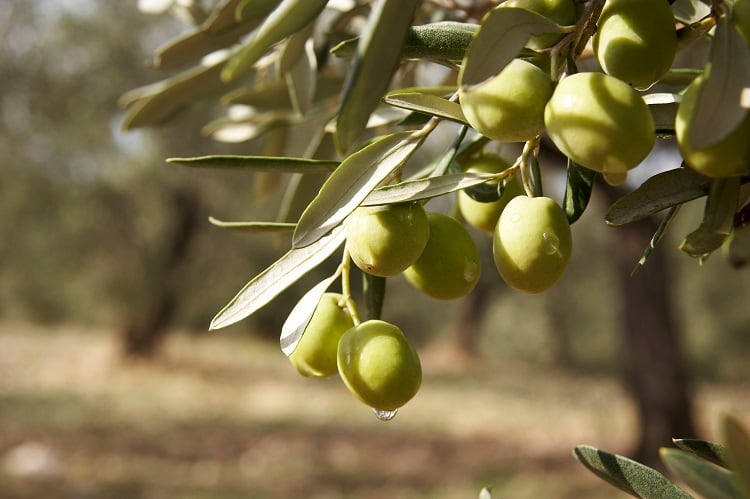The price of olive oil has shot up over the last two years, with figures from market insight firm, Y Charts, reporting a record high of 10281.37 USD per metric tonne, in January 2024. So, what caused this sharp increase, where is the olive oil industry headed, and what’s next for the commodity labelled ‘liquid gold’. We track the timeline of the olive oil crisis.
Olive oil crisis timeline
Winter 2021/22
Drought conditions hit the Mediterranean region, the world’s largest supplier of olive oil, during the winter of 2022/23 resulting in poor olive harvests.
“Long-lasting, above-average temperatures, warm spells and poor precipitation have led to severe drought conditions in the Mediterranean region,” said a spokesperson for the European Commission. “The ongoing drought is already having critical impacts, according to the report compiled by the JRC-run European Drought Observatory (EDO).”
Spring 2022
Olive oil prices begin to rise when the poor olive harvests lead to limited olive oil supplies. This strain on supplies is exacerbated by rising consumer demand for the popular commodity.
Autumn 2022
Drought conditions in Spain worsen, with a lack of rain in October and November further damaging olive crops. Spain, the single biggest supplier of olive oil, produces just 50% of the olive oil it produced the previous year.
Winter 2022/23
Prices begin to rise much more quickly, jumping from 4316.42 USD per metric tonne in September 2022 to 5792.37 USD per metric tonne in December 2022 - an increase of 1475.95 USD per metric tonne in three months.
For comparison, the price of olive oil had been at 4030.65 USD per metric tonne, the three months prior to that, in June 2022. Meaning the previous quarter's increase was only 285.77 USD per metric tonne.
2023
Drought conditions persist throughout 2023, with little respite for producers, putting further strain on supplies and continuing to push prices higher. The cost of olive oil reaches at 9463.73 USD per metric tonne in December 2023, with the rising prices showing no signs of abating.
2024 and beyond
Growing conditions for olives continue to worsen with a drought declared across the Mediterranean region in spring 2024 - this has not yet been lifted.
“As the drought’s severity is expected to persist, concerns rise about its impacts on agriculture, ecosystems, drinking water availability and energy production,” said a spokesperson for the European Commission.
And this strain on resources will continue to put pressure on prices for manufacturers and consumers through the remainder of 2024 and into 2025.
“The olive oil market is highly volatile as a result of climate issues and supply demands, making it difficult to forecast how prices will shift in the coming months and years,” Jeremy Gibson, marketing director at Princes Group, which owns olive oil brand, Napolina, told FoodNavigator. “We fully understand the challenges being faced by consumers at this time and we are continuing to explore all options to secure supply and keep prices as low as possible.”

What is the future for the olive oil industry?
The olive oil industry is currently under severe strain and that strain looks set to continue as the effects of climate change continue to intensify.
"Although olive trees are incredibly hardy, their crop is highly susceptible to weather conditions including frost, drought, rain, and hail, as well as pests," said a spokesperson for food and beverage distributor, Maltby&Greek. "The increased variability in the weather we are seeing from climate change has had a big effect over the past few years. Heat waves, drought and wildfires can also completely kill off an olive grove, which will take many years to be replanted and come back into production (they hit their stride in their 50s and can live 600 years or more!). Climate change-induced weather patterns have not only led to reduced yields but also lower quality olive oil. We are also likely to see a shift in the areas that are suited to olive oil production as the climate warms, but this change in land-use takes time."
With the issues facing the olive oil industry, mirroring issues also faced by commodities including butter, cocoa, coffee and sugar, we may well be looking at the new normal for food and beverage supplies, and prices, with manufacturers struggling to meet consumer demand.
What is the future of olive oil production and prices?
We’ll be addressing this question in more detail in our upcoming feature, ‘What is the future of the olive oil industry?’






